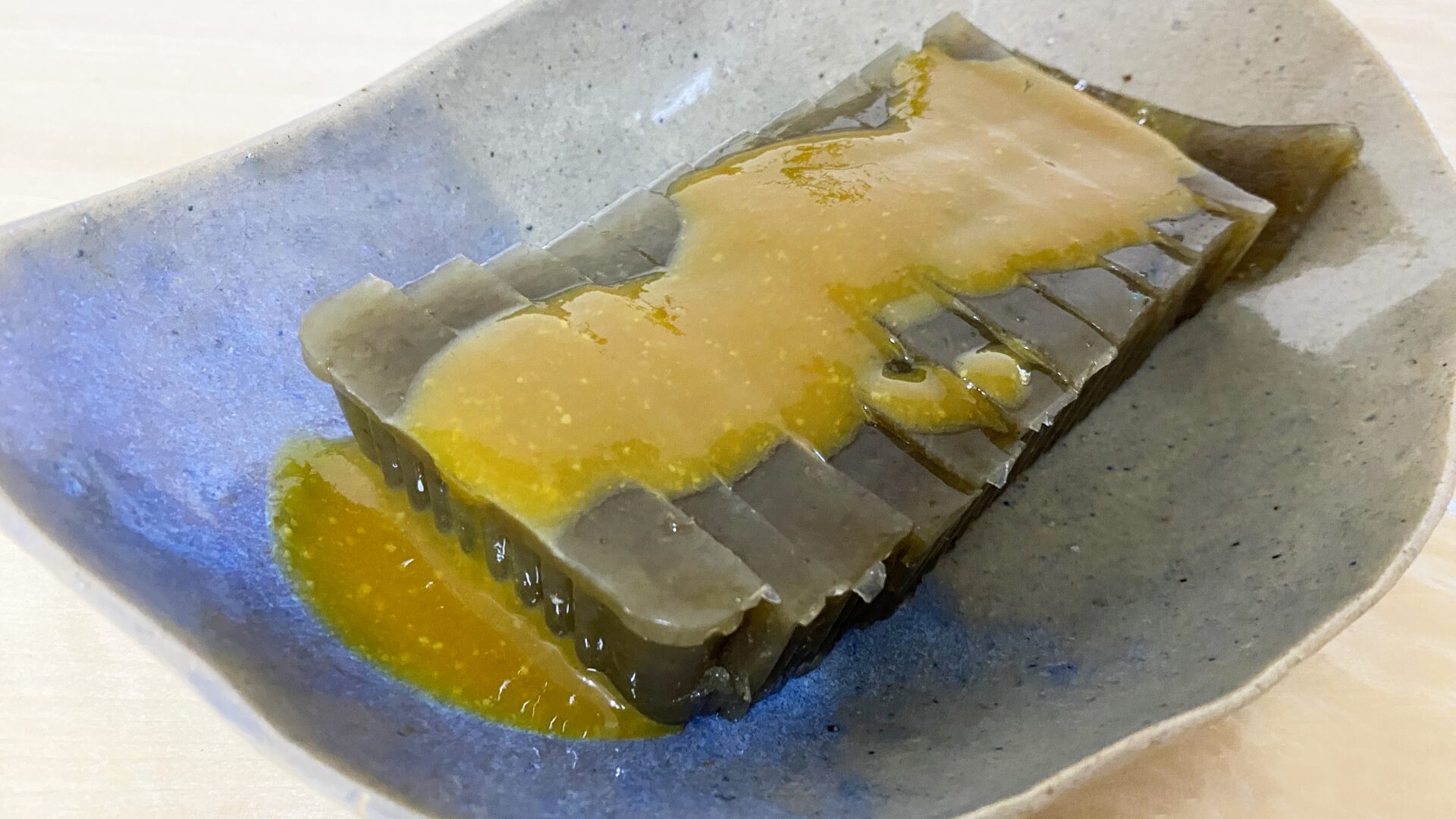
Hey there, food lovers! Let’s take a trip to Niigata and discover “Igoneri,” a unique dish with a fascinating history. Made from a type of seaweed, it might sound a bit unusual, but it’s a local delicacy with a surprisingly pleasant taste and texture. Get ready to explore this coastal gem!
Dish Name: Igoneri
- Region / Location: Niigata Prefecture (throughout the prefecture).
- Primary Area of Tradition: Niigata Prefecture, especially Sado Island.
- Main Ingredients: Igosa (a type of seaweed).
How It’s Eaten / Served
Igoneri is made by boiling and thoroughly kneading “igosa” seaweed with a careful adjustment of the water, then thinly spreading and cooling it to solidify. It has a characteristic chewy texture, a mild flavor, and a subtle sea aroma. On Sado Island, the traditional way to serve it is to thinly slice the solidified igoneri and serve it with condiments like grated ginger and soy sauce. In the mainland Niigata area, it’s more common to solidify the boiled and strained seaweed in a container, slice it into rectangular pieces, and eat it with ponzu or vinegared miso. Recently, some creative variations have emerged, including dessert-style presentations with brown sugar syrup and kinako (roasted soybean flour) or even served with vanilla ice cream!
Cultural Background and Preservation
Igoneri is a local dish representative of Sado Island, made from “igosa” seaweed harvested from the Sea of Japan. This seaweed, which grows on larger seaweeds like kelp, is widely used in the Sea of Japan region. In Sado, it’s called “igo,” while in the Niigata area, it’s known as “ego.” Traditionally, igoneri was made in homes during the autumn and winter seasons and was often served at special occasions like weddings and funerals. It’s believed that the “Igoneri” culture came from the “Okuyuto” culture of Kyushu, making its way from Hakata via the Kitamae ship route and the Noto Peninsula’s Wajima, eventually reaching Sado and spreading to various parts of Echigo (Niigata). While it was originally a seasonal dish, commercial production has made it available year-round, transforming it into an everyday food.
Although fewer households make it at home now, efforts are being made to preserve the igoneri culinary tradition through workshops and classes taught by local community members. Commercially produced igoneri is readily available in stores, making it easy for people to enjoy this unique local food.
Additional information:
- Igosa (いご草): A type of seaweed used to make Igoneri.
- Okuyuto (おきゅうと): A similar dish from Kyushu, believed to be the origin of Igoneri.
- Kitamae ship (北前船): Trading ships that operated in the Sea of Japan from the 17th to the 19th centuries.
- Ponzu (ポン酢): A citrus-based sauce.
- Vinegared miso (酢味噌): A condiment made from miso, vinegar, and sugar.
- Kinako (きなこ): Roasted soybean flour.
The information about regional cuisine featured on this website (Piggy's Grandma of Japan) is summarized and adapted from the Ministry of Agriculture, Forestry and Fisheries of Japan (MAFF) website, "Our Regional Cuisines"Additional commentary is provided based on the unique experiences and perspectives of the site's editors.
The copyright for the original content regarding regional cuisine belongs to the Ministry of Agriculture, Forestry and Fisheries of Japan.
The summaries and adaptations published on this site are intended for informational purposes only. Piggy's Grandma of Japan does not guarantee the accuracy or completeness of this information. For the most accurate and complete details, please refer to the original pages on the MAFF website.


